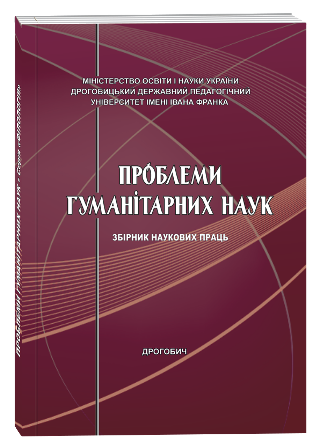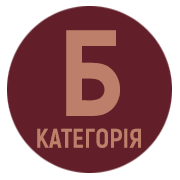VERBAL AND PICTOGRAPHIC FEATURES OF THE TEXT OF FRENCH COMICS
DOI:
https://doi.org/10.24919/2522-4565.2022.49.28Keywords:
comics, creolized text, polycode character, verbal code, pictographic code, decoding, drawing, emotiveness.Abstract
The article examines the verbal and pictographic features of French comics on the basis of a creolized text. The relevance of the article is determined by the interest of linguistic science in the problems of studying the polycode nature of communication, human culture, texts, since the world around us is overfilled with texts, images, inscriptions and various signs that closely interact with each other. The aim is to analyze the peculiar interaction of verbal and non-verbal components of the linguistic-visual complex of comics. Comics have been proved to be a special type of text where visual components prevail over verbal ones. The verbal code of the comics is represented by the dialogues of the characters, the author’s innovations that correspond to the French colloquial style of speech, providing simplicity of perception, emotiveness and an array of information. Non-verbal code is represented by characters, circumstances, relevant ideograms that convey the nuances of tone, timbre of the voice of the characters. It is the images that require a detailed and serious decoding, analysis, reflexivity from the reader. The use of multisystem codes allows to increase the channels of perception of the information by the addressee, effectively decode it. The recipient, receiving information, is involved in the individual picture of the author’s world, his communicative space and text system. The author constantly monitors the decoding process in order to adhere to the intended direction and obtain aesthetic pleasure. The image in the comics serves as the recipient’s identifier with the character. The language of comics is distinguished by its originality, it is full of interjections, exclamatory words and sentences. The prospects of the research are to identify psycholinguistic features of the perception of comics, to determine the range of speech competencies that are achieved through the use of comics in practical classes in French.
References
Бєлов Д. Комікс як продукт інформаційної культури. Наукові праці Національної бібліотеки України імені В. І. Вернадського. 2018. 49. С. 29–42. DOI:10.31866/2616-7654.5.2020.205728
Івасишин М. Р. Мультимодальність англомовного коміксу: лінгвальний та екстралінгвальний виміри: автореф. дис. … канд. філол. наук: 10.02.04. Львів : ЛНУ імені Івана Франка, 2019. 22 с.
Космацька Н. В. Структурно-функціональні особливості мови французьких коміксів (на матеріалі серії «Asterix») : автореф. дис. … канд. філол. наук : 10.02.05. Київ, 2012. 19 с.
Макклауд С. Понимание комикса. Невидимое искусство. Москва : Белое яблоко, 2016. 216 с.
Сонин А. Г. Комикс : психолингвистический анализ : монография. Барнаул : Изд-во Алт. госун-та, 1999.110 с.
Троян Т. Г. Формування комікс-культури : переваги, функції, значення Міжнародний науковий журнал «Інтернаука». 2018. № 7 (1). С. 22–26. Lacassin F. Pour un neuvième art, la bande dessinée. Paris : Slatkine, 1982. 510 p.



